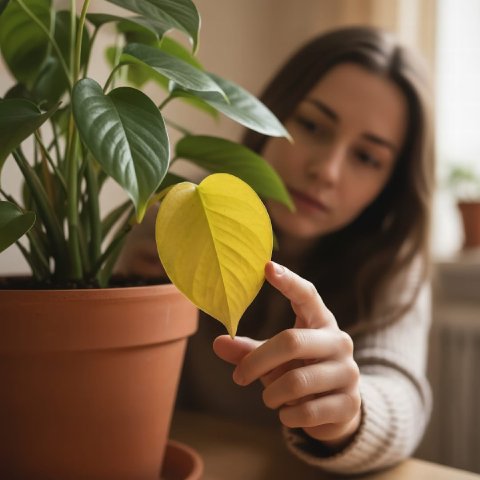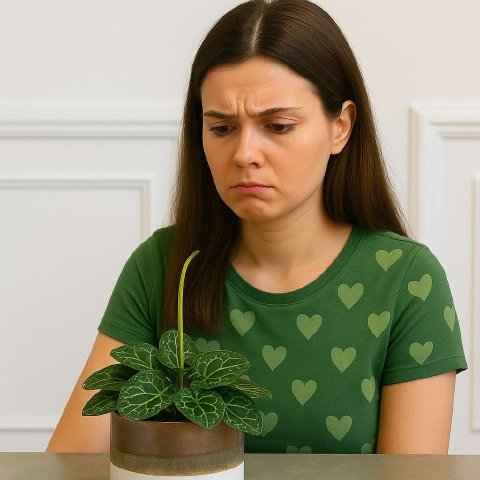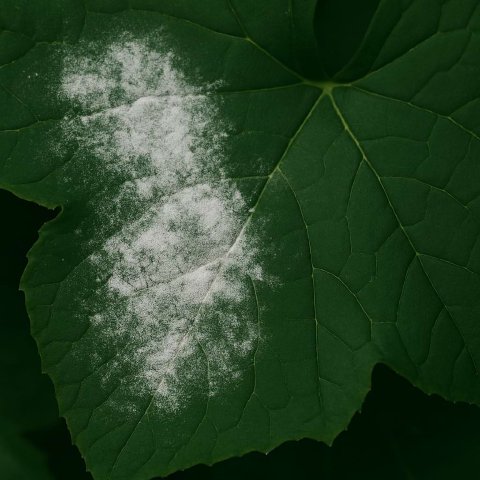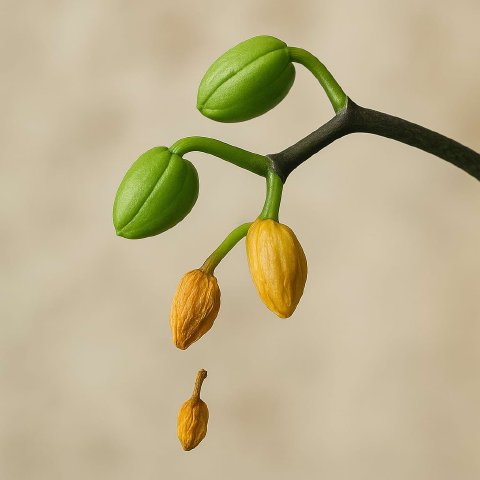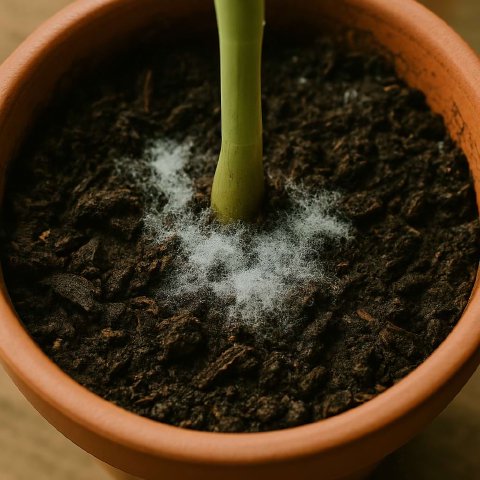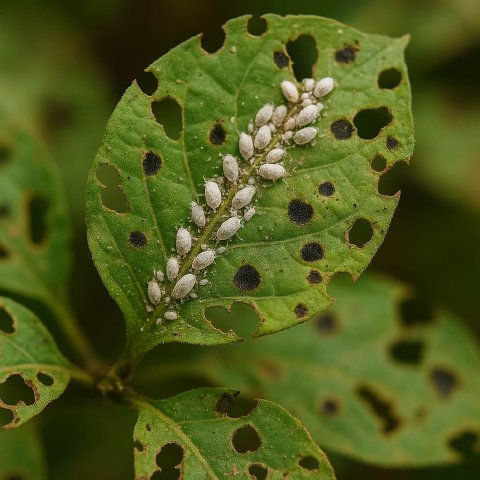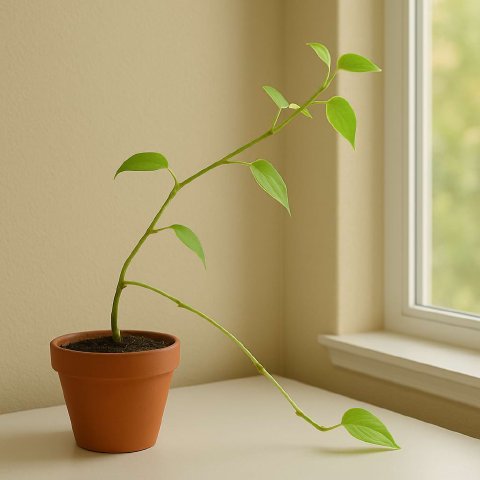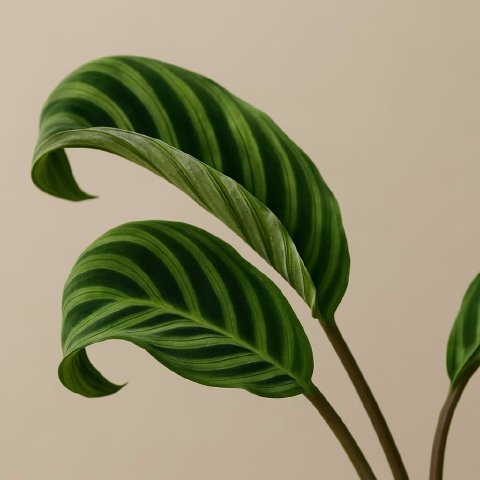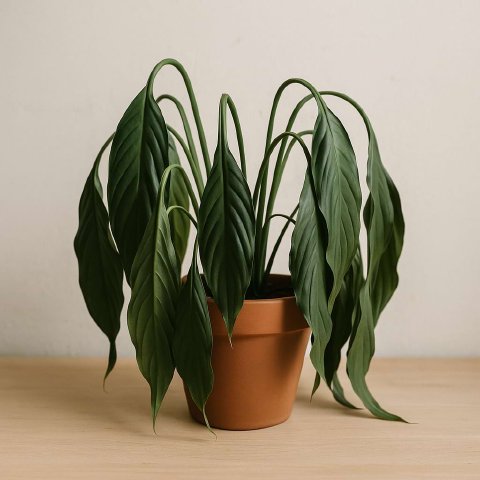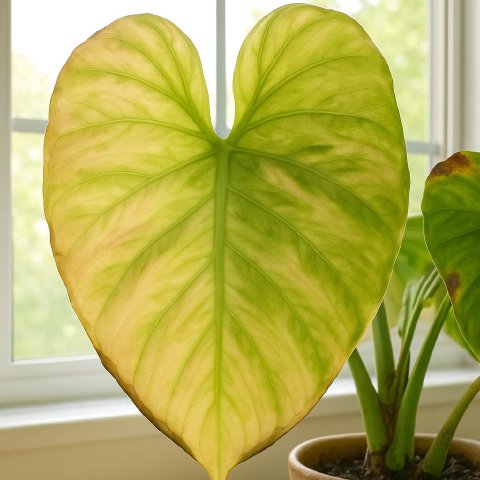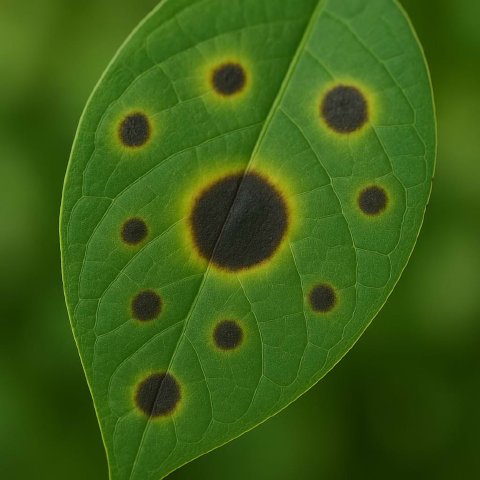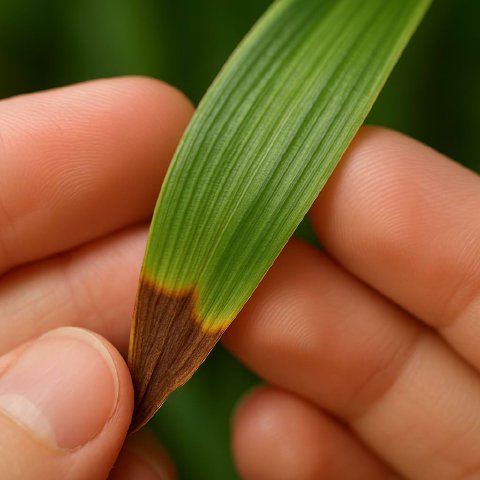🪴 In This Guide 🪴
🎯 Plant Stuck in Neutral? Let's Diagnose the Problem
Quick Diagnostic Chart
Hello, plant friends! Anastasia here. Is your plant just… sitting there? If weeks or even months have gone by without a single new leaf, your plant’s growth is likely stunted. While frustrating, it’s a clear sign that your plant is missing a key ingredient it needs to thrive.
Growth requires energy, and plants create energy from light, water, and nutrients. A lack of growth almost always points to a deficiency in one of these areas. Let’s figure out what’s holding your plant back.
| If you see… | And the plant is… | It’s likely… |
|---|---|---|
| No growth, plus long, “leggy” stems | In a dark corner or far from a window | Not Enough Light (The #1 Cause) |
| No growth, plus pale or yellowing leaves | In the same pot for over a year | Nutrient Deficiency |
| No growth; soil dries out extremely fast | In a pot that seems too small | Rootbound |
| No growth, plus other signs like wilting or spots | Soil is either bone-dry or soggy | Improper Watering |
| No growth during the fall or winter months | Otherwise healthy-looking | Dormancy (Completely Normal!) |
🤔 Why Do Plants Stop Growing?
The Essentials for Growth
Think of your plant as a factory that produces new leaves and stems. To run, this factory needs three things:
- Energy: This comes primarily from light through photosynthesis.
- Raw Materials: These are water and nutrients (like nitrogen and phosphorus) absorbed from the soil.
- Space: The roots need room to expand to gather more raw materials.
When a plant stops growing, it means its factory has shut down. This is usually because it lacks one of these critical inputs. It’s conserving its resources just to stay alive, with no extra energy left over to produce new growth. Our job is to find the missing piece.
🌿 Top 6 Causes of Stunted or Slow Growth and How to Fix Them
Cause #1: Not Enough Light
This is the most common reason for a lack of growth.
- Why it happens: Light is the fuel for a plant’s engine. Without enough light, the plant can’t photosynthesize properly to create the energy needed for new leaves. It will simply maintain its current state.
- How to check: The plant is located far from a window or in a room with little natural light. You may also see other signs of low light, like “leggy” growth or a pale, washed-out color.
- The Fix: Move the plant to a brighter location. Most houseplants thrive in “bright, indirect light,” which is usually found right near a window. An east-facing window is perfect; a few feet back from a south- or west-facing window also works well. If you don’t have enough natural light, supplement with a grow light.
Cause #2: Nutrient Deficiency
An empty pantry means an empty factory.
- Why it happens: The nutrients in potting soil are finite. After about a year, most of the essential minerals have been used up by the plant. Without these raw materials, it can’t build new cells.
- How to check: The plant has been in the same soil for a long time (1-2+ years) and hasn’t been fertilized. You may also see pale or yellowing leaves.
- The Fix: Start fertilizing. During the spring and summer growing season, feed your plant with a balanced liquid fertilizer every 2-4 weeks, diluted to half-strength. The best long-term solution is to repot the plant with fresh, nutrient-rich potting mix.
Cause #3: It's Rootbound
The roots have run out of room to work.
- Why it happens: When a plant’s roots have completely filled its pot, they form a dense, tangled mass. There’s no room for them to expand, and there’s very little soil left to hold the water and nutrients they need. The plant is effectively “choked” and can’t support new growth.
- How to check: Slide the plant out of its pot. If you see a dense web of roots with little visible soil, it’s rootbound. Other signs include water running straight through the pot and soil that dries out very quickly.
- The Fix: Repot your plant. Choose a new container that is just 1-2 inches wider in diameter. Gently loosen the bottom of the root ball and place it in the new pot with fresh soil.
Cause #4: Improper Watering
Both too much and too little water can halt growth.
- Why it happens:
- Underwatering: A constantly thirsty plant is a stressed plant. It will focus all its energy on survival, not growth.
- Overwatering: This leads to root rot, which damages the plant’s ability to absorb water and nutrients, effectively starving it.
- How to check: Assess your watering routine. Is the soil always bone-dry or constantly soggy?
- The Fix: Adopt a consistent watering schedule based on the plant’s needs. Water thoroughly only when the top 1-2 inches of soil are dry. Ensure the pot has good drainage to prevent waterlogging.
Cause #5: It's Dormant
Sometimes, a lack of growth is perfectly normal.
- Why it happens: Most houseplants naturally slow down or stop growing during the shorter, darker days of fall and winter. This is a resting period called dormancy. They are conserving energy for the spring growth spurt.
- How to check: It’s between October and February. The plant looks otherwise healthy (no yellowing, spots, or pests).
- The Fix: Do nothing! Let your plant rest. Reduce watering frequency and stop fertilizing completely until you see signs of new growth in the spring.
Cause #6: It's Acclimating
Moving is stressful for plants, too.
- Why it happens: When you bring a plant home from a nursery, it has to adjust to a completely new environment with different light, temperature, and humidity. This “acclimation period” can last for several weeks or even a couple of months, during which the plant will focus its energy on adjusting its root system rather than producing new leaves.
- How to check: You’ve had the plant for less than two months, and it looks healthy otherwise.
- The Fix: Be patient. Provide the plant with the best possible conditions (especially good light) and avoid other stressors like repotting or fertilizing until it has settled in.
🛡️ How to Encourage Healthy Growth
Best Practices for Thriving Plants
- Light is Key: Providing the right amount of light is the single most important factor for vigorous growth.
- Feed During the Growing Season: Think of fertilizer as a vitamin supplement for your plant’s main meals (light and water).
- Repot Every 1-2 Years: Giving your plant fresh soil and more room for its roots is essential for long-term health.
- Be Patient: Plants operate on their own timeline. Don’t panic if growth isn’t explosive. Consistent, steady growth is the goal.

